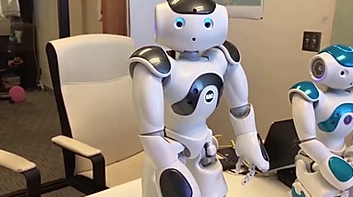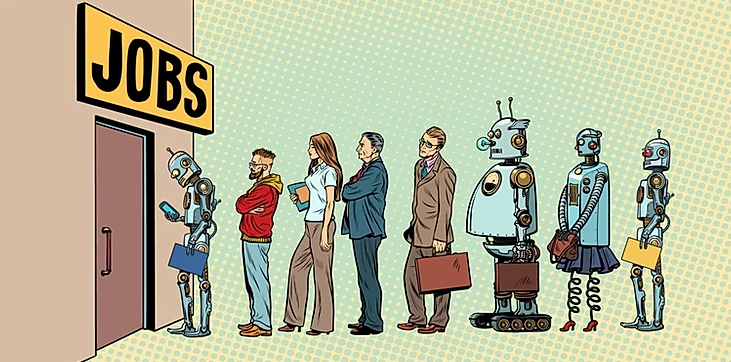1. Robotic Process Automation involves a robot sitting at your desk, doing your work.
 Sorry to disappoint you, but Nao, the robot, will not be working at a desk next to you, performing your work.
Sorry to disappoint you, but Nao, the robot, will not be working at a desk next to you, performing your work.
Unfortunately, many of the images portrayed in the media and automation industry alike involve some form of humanoid robot. RPA or otherwise known as Software Robots, sits on your desktop (like a business application) or operates in the background, on your IT infrastructure;
2. RPA will cause a loss of jobs.
As per the World Economic Forum’s job report, algorithms and intelligent machines are expected to create 133 million new roles globally while displacing around 75 million by 2022 — which is a total net gain of 58 million jobs, not killing them. And in 2020, as per the Gartner estimates, AI will create 2.3 million new jobs while eliminating 1.8 million positions.

Yes, it’s true AI is creating new job opportunities for highly skilled professionals like software engineers, AI or machine learning engineers, data analysts, data scientists, digital communicators, and online specialists. Though, AI and automation have great scope of replacing repetitive tasks, there is a hidden side of AI and machine learning and that is rarely discussed by the experts, how AI is creating jobs not killing them even for low-skilled workers, with great opportunities. There are two types of RPA robots: Attended Robots and Unattended Robots. Attended Robots are those which require worker interaction and direction, because the work requires some form of assessment or judgement that can only come from years of experience on the job. So for many organisations that adopt Attended Robots, they will operate side by side your team. Each of the new job roles that are created as a result of working with RPA are redesigned, freeing the team of repetitive and tedious work, allowing them to move up the value chain and work on more interesting and value adding tasks. However, if there are an abundance of repetitive, rules based, work, you can automate the entire process from start to finish, with Unattended Robots, not requiring any team member’s intervention.
3. RPA requires an expensive and lengthy consultation and implementation like business application implementations.
 RPA was born out of the frustration of traditional automation. When you think of RPA, think of speed. Speed at the pace in which the robots work but also the speed of deployment.
RPA was born out of the frustration of traditional automation. When you think of RPA, think of speed. Speed at the pace in which the robots work but also the speed of deployment.
With low code drag and drop pre-built activities, screen capture, and no integration required, clients are pleasantly surprised. With RPA comes a significantly reduced cost to build and implement. We’re seeing robots built in as little as a couple of weeks and implemented shortly thereafter.
4. RPA requires expensive integration with other business systems.
No, it’s doesn’t require integration. It sits alongside your current business applications. RPA simply mimics what your employee would do, open and access applications, transpose information, complete the business processes.

As a result of there being little internal IT requirements, RPA is driven by the business. Naturally, you need to take IT on a journey and seek their counsel and get their involvement from the get-go, but RPA is “non-invasive”, there is no internal IT surgery required. Also, because the initiative is driven by the business, it can be prioritised by the business unit that wants to champion the initiative, rather than having to complete for IT internal resources.
5. RPA is only the domain of corporate Australia, for the likes of Telstra and Macquarie Bank, etc.
 Yes, some of the RPA technologies on the market are expensive and not geared to SME and Mid-market clients.
Yes, some of the RPA technologies on the market are expensive and not geared to SME and Mid-market clients.
However, if you partner with the right organisation, you can get started in a very low-cost, low risk manner, with a minimum of fuss.
About the Author: David Barlow, Co-Founder & Commercial Director, Sherpa Works, is passionate about helping SME and Mid-market companies experience outrageous success with their Bot workforce.



